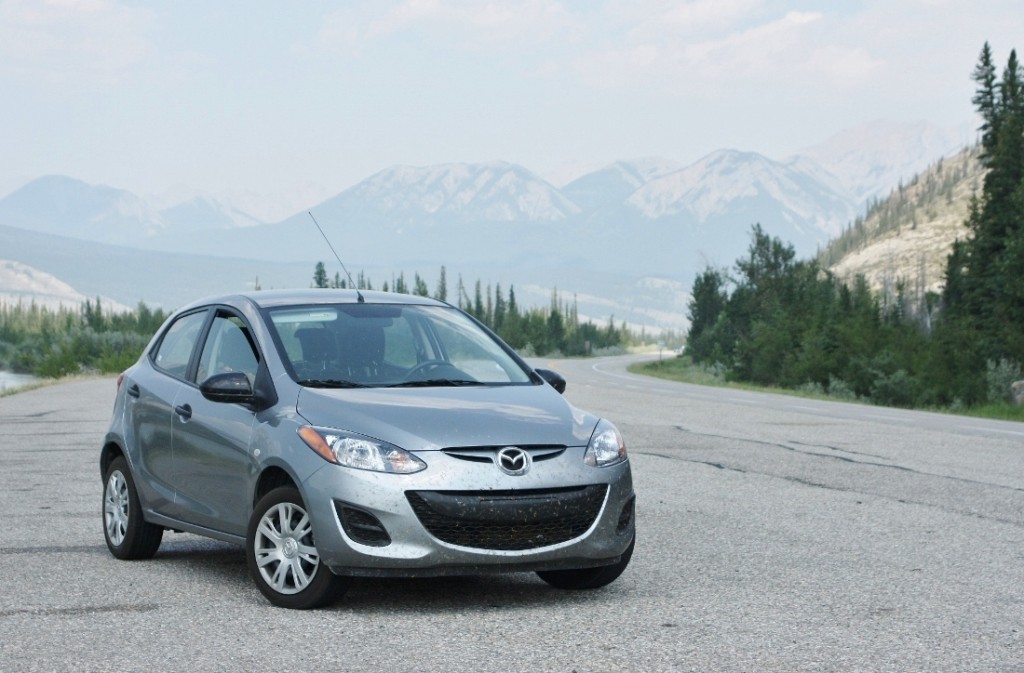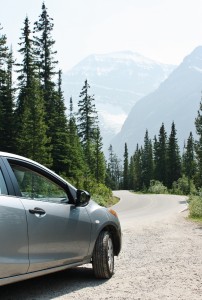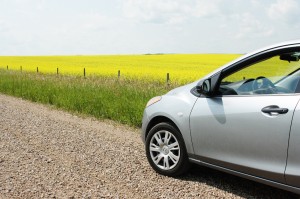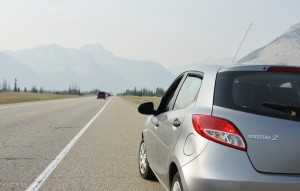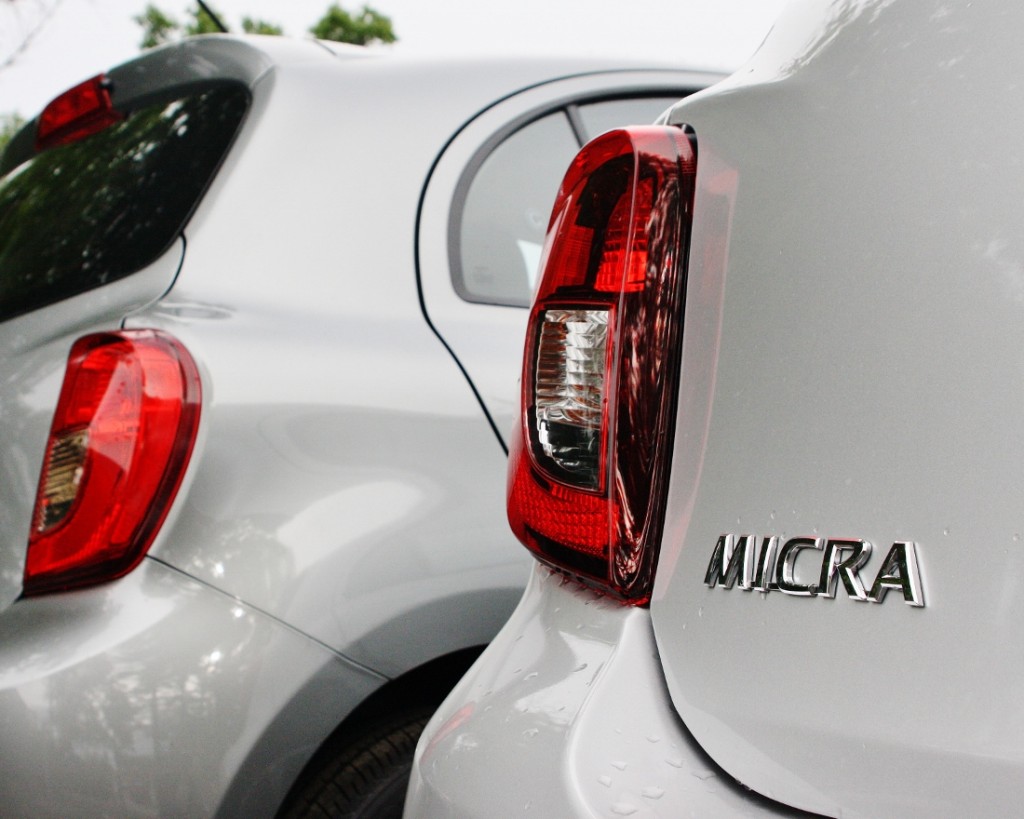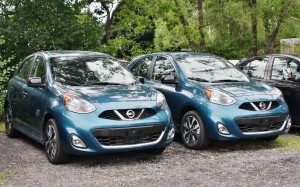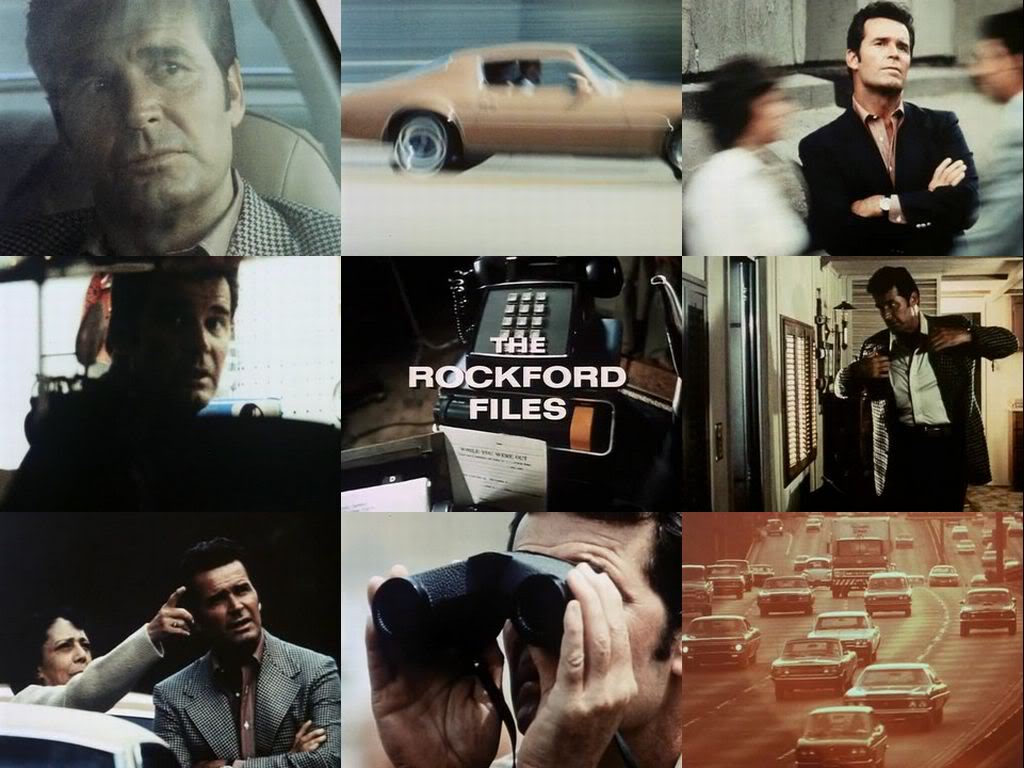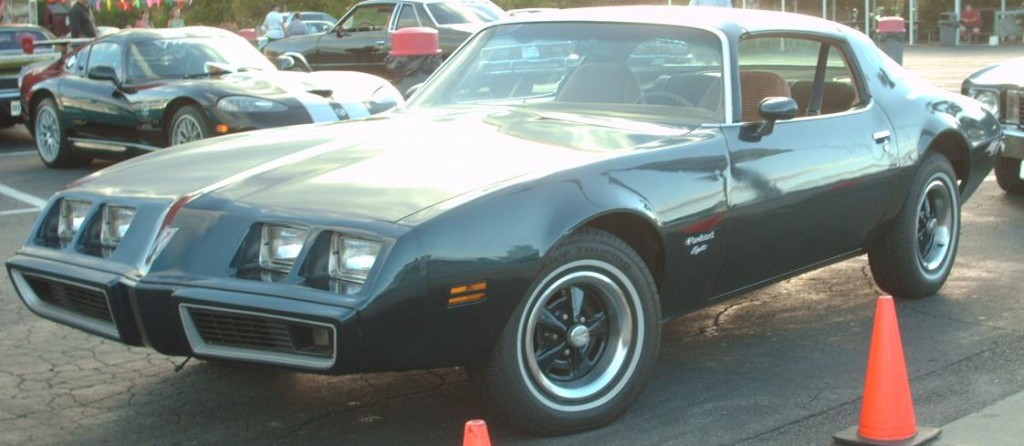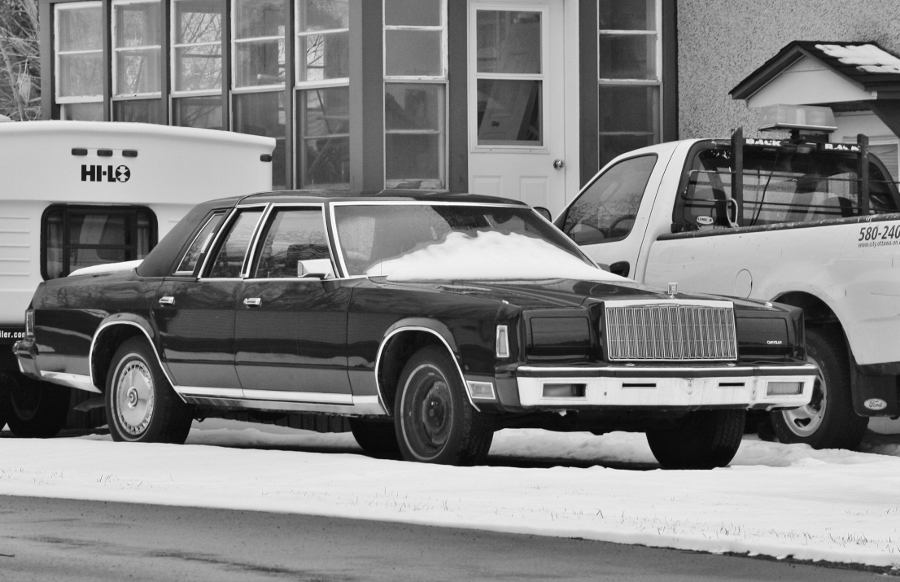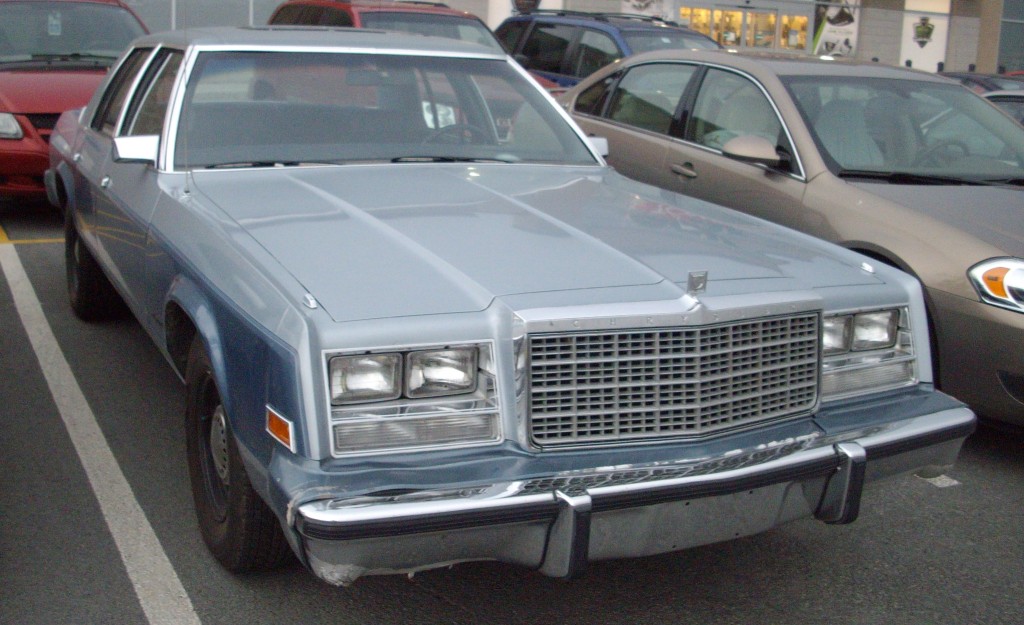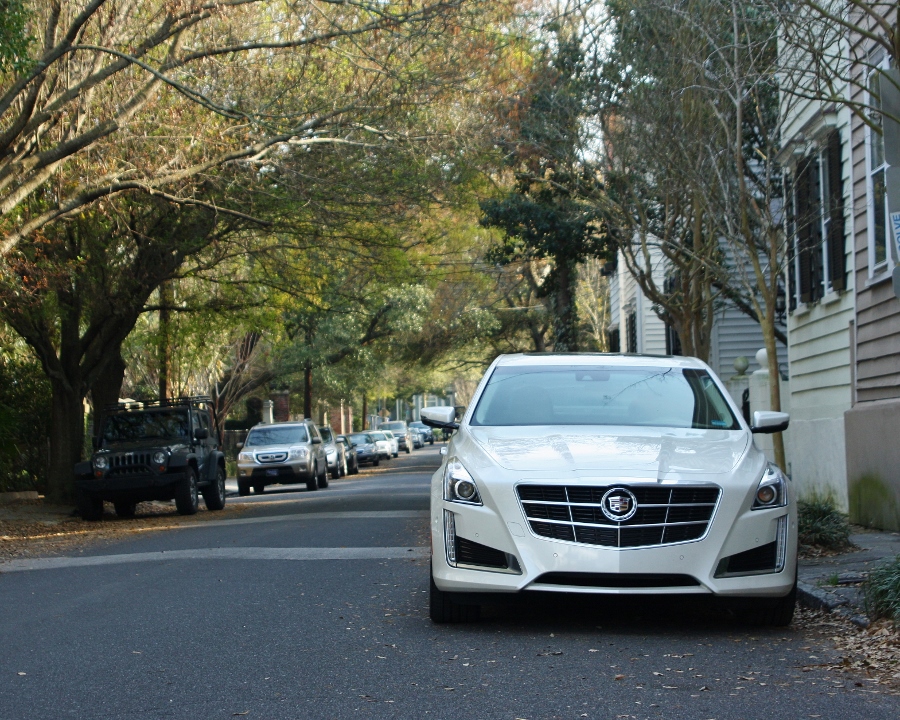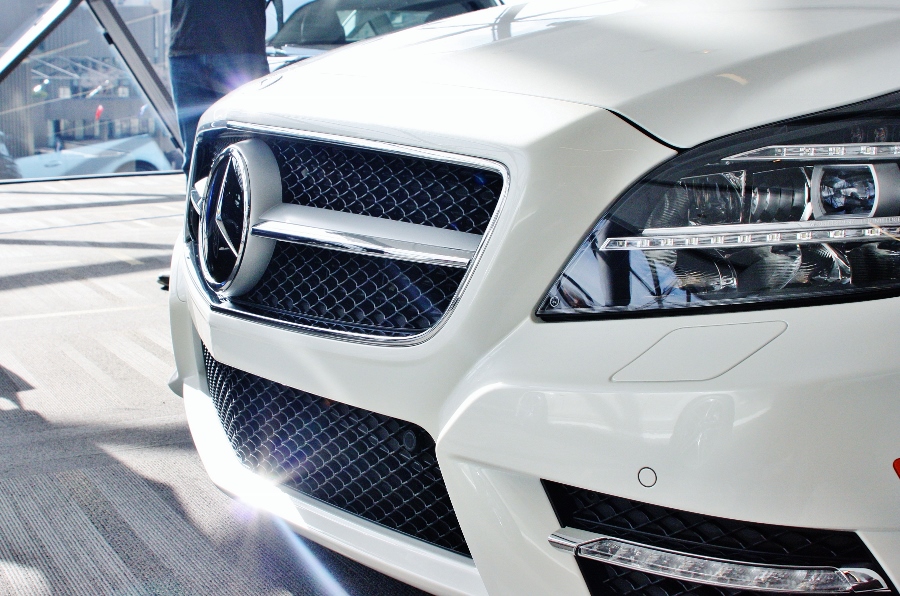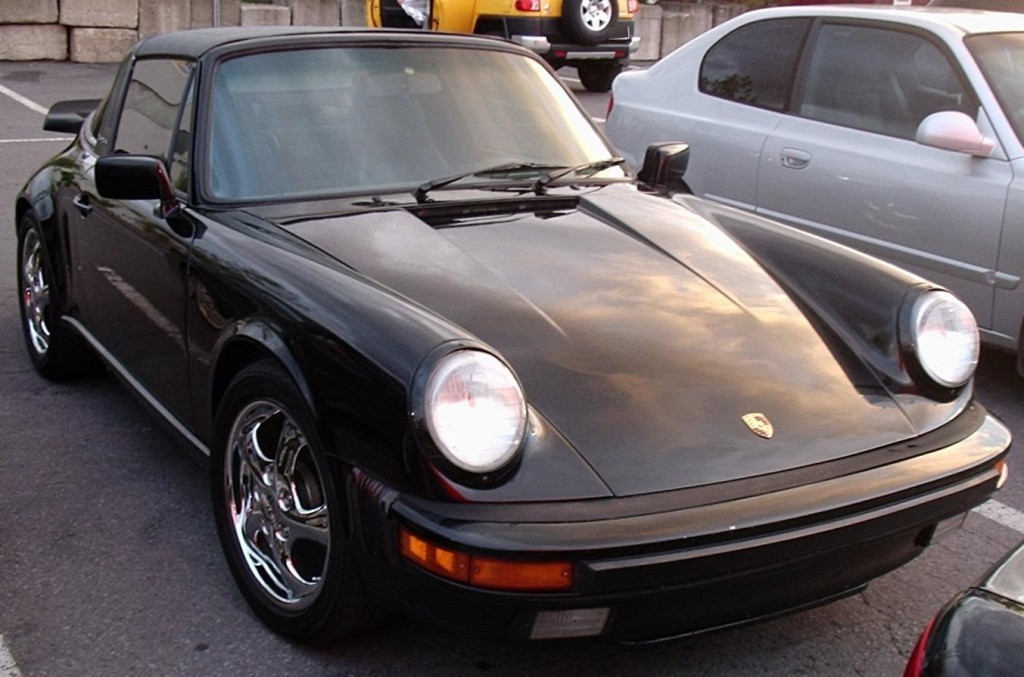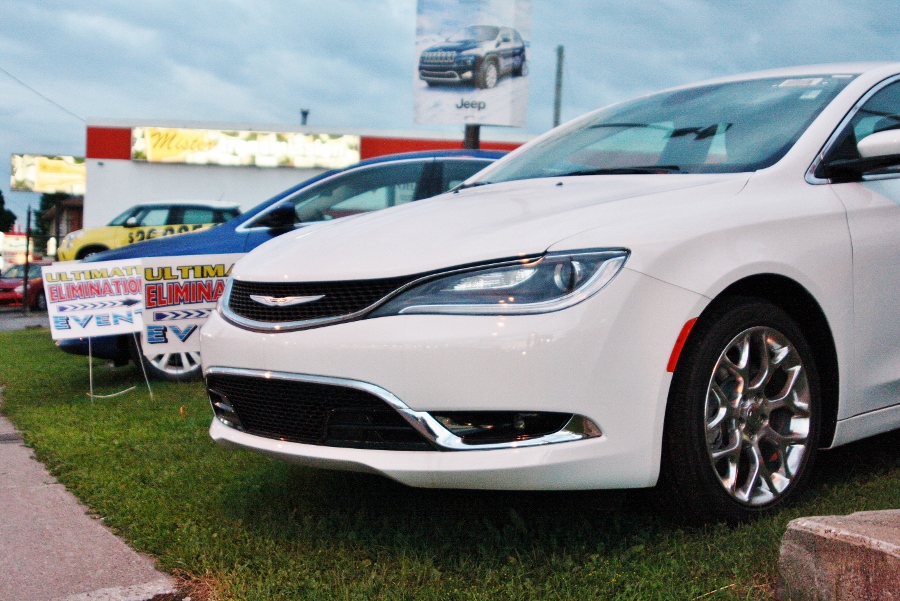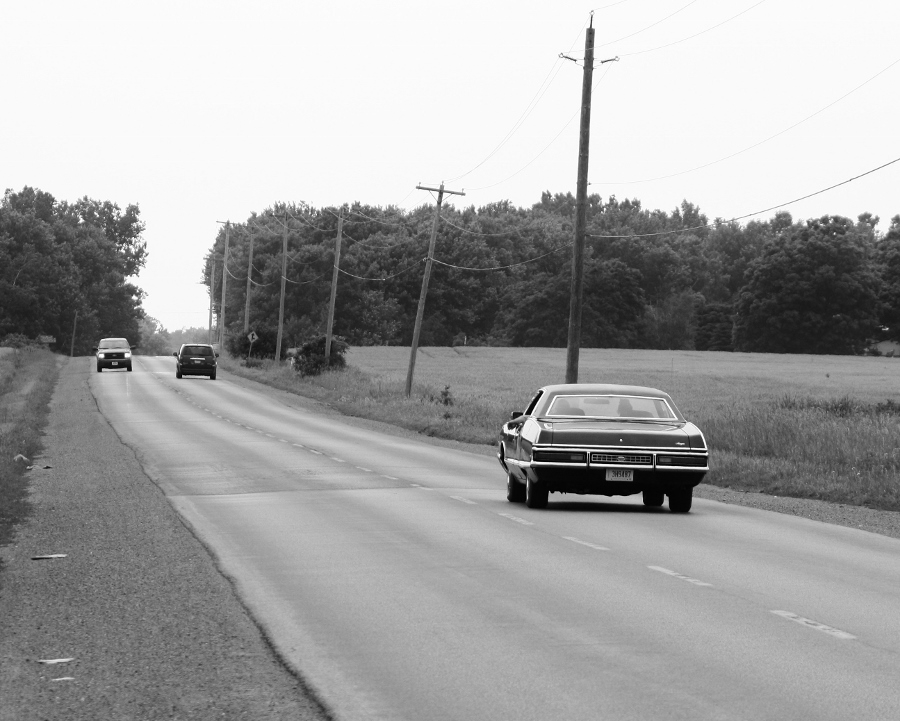2014 Mazda 2 proves a surprisingly liveable road trip companion*
*too bad about the transmission
Like Texas of the North, it just seems that everything’s bigger in the province of Alberta.
Personal wealth, population growth and the proportions of private vehicles all outstrip the national median. Oh, and there are big mountains, too.
The only thing not in oversupply after landing in a hot, sunny Edmonton two weeks ago was rental car choice – the airport cupboard was as bare as supermarket shelves before a hurricane. A cab took me to an off-site agency, where I waged a bloody battle for the last four-wheeled machine that didn’t possess a half-ton carrying capacity.
Beggars can’t be choosers, so fate and circumstance left me holding the keys to a diminutive Mazda 2 – a zygote of a vehicle by Alberta standards, but one that would ultimately carry me for several thousand kilometres over two weeks.
As a 6’4″ man with a sensitive back and (maybe) a similar ego, I was a little worried. Would Mazda’s smallest offering ultimately break me like an adolescent’s heart?
My initial fears proved unfounded. After two weeks of driving across picturesque landscapes both urban and rural, mountainous and endlessly flat, the Mazda 2 proved itself to be a comfortable, roomy, and compliant driver, albeit one with a few qualms.
The nitty-gritty
First off, the car’s drivetrain is more likely to inspire flashbacks to the 90s than get pulses racing. With a 1.5-litre four-cylinder (the only available engine), making 100 horsepower and 98 foot-pounds of torque, the hatchback’s power numbers fail to impress when viewed on paper.
Transmission choices are also archaic – a five-speed manual and four-speed automatic rounded out the gearbox menu.
Venturing inside the silver 4-door rental tester, the base-level interior matched the drive train for sheer minimalism. A tachometer and CD player with radio presets joined power windows and door locks in the luxury item category, though the door locks were inconveniently placed on the centre console and the exiting door had to be locked via a key.
Air conditioning came in handy on the hottest of days, and when acrid forest fire smoke encroached from faraway blazes. However, being a windows-down kind of guy (and wanting to maximize mileage), AC usage was kept to a minimum during the trip.
The Mazda’s spartan instrumentation didn’t leave much room for computing power. A trip meter was provided, but on a long road journey through vast stretches of wilderness, a miles-till empty display would have provided piece-of-mind (especially given the car’s less-than-exact eight-bar digital fuel gauge and tiny gas tank).
These little details proved an annoying yet minor distraction from an otherwise compliant vehicle.
The drive
The first few days of the test involved inner-city and highway driving in and around the rapidly growing city of Edmonton, as well as a trip to Jasper National Park in the Canadian Rockies – about three-and-a-half hours each way.
The base Mazda 2 didn’t come equipped with a tilt/telescoping steering wheel, but I found the wheel was already optimally placed for my stature.
So too was the cushy-yet-supportive seat, which provided proper back support and was the right height for the wheel.
Headroom and legroom was surprisingly abundant in the Mazda 2’s cabin, and the armrests never once caused elbow soreness (a common complain on long-haul drives). Amazingly, I had lucked into a very comfy subcompact for this journey.
On the road, the car’s light weight (about 2,300 pounds), tight turning radius and 55-series tires (mounted on 15-inch rims) made for a taught feel and nimble road manners. At all speeds, the steering remained weighted and on centre, with no play or need for minor corrections at high speed.
These mannerisms came in handy not just on the streets of downtown Edmonton (clogged with menacing mountains of moving steel) but also on hair-raising hairpin mountain roads where the car’s handling and precision was an asset.
In a straight line, the cog-challenged automatic was happy to revv close to redline under moderate acceleration, making the most of the engine’s meager horsepower, but was reluctant to leave the comfort of overdrive at speed unless the accelerator was nearly floored. With no cruise control (another gripe), this meant a falloff in speed before a looming monster in the rear-view necessitated a throttle jab and the desired downshift.
An overdrive lockout button was located on the shifter, which ended up being used regularly in loftier elevations. Equipped with the manual transmission, I could see this car coming alive and being a fun little runabout, not unlike older Honda Civic hatches from the late 80s and early 90s.
The front disc/rear drum anti-lock brakes reliably brought the featherweight car to a halt in short order, and exhibited a firm, consistent brake pedal feel that didn’t go unappreciated.
With double-trailer transport trucks regularly plying area highways, mingling with the standard single-occupant commuter vehicle favoured by Edmontonians (A Ford F-350 or Ram 3500 crew cab 4×4, often with lift kit), the wee Mazda seemed to be in a perpetual state of menace.
However, absent from the driving experience – on 110km/h highways as well as on windy mountain passes – was the buffeting normally encountered by small cars traveling fast outside of a vacuum. The little Mazda must have all the right curves, as it stayed planted in its lane as crosswinds slipped around it.
I’ll admit to feeling a little emasculated by my losing hand in the automotive size contest, but not having to spend more than $40 at the gas pump was a bonus that gave me just a little feeling of smug satisfaction.
Mazda lists the automatic’s fuel consumption at 7.1 litres/100km in the city and 5.8 on the highway, while the 5-speed returns slightly better numbers. Even with the automatic, these numbers are better than those returned by, say, the Nissan Micra, and pretty much identical to those of a base Chevy Sonic.
What next?
A lack of interior refinement and available features is a handicap for the 2 that could affect sales, though a replacement looms on the horizon. Recently, Mazda announced it will be introducing the subcompact’s successor sometime in 2015 as a 2016 model.
The new model is expected to incorporate the ‘Kodo’ design language currently seen on the Mazda 3 and 6 (thus banishing the last of the demented clown faces to the scrap heap of history), while also piling on the technology.
A fuel-efficient Skyactiv engine of an undetermined small displacement will likely be found under the hood, and it should be safe to say goodbye to the 4-speed automatic, and possibly the 5-speed stick as well.
Despite being modestly endowed with power and saddled with a museum artifact for a transmission, the Mazda 2 held up well during two weeks of extensive driving under very diverse conditions.
From the endless fields of Saskatchewan to the towering peaks of British Columbia, in rain, heat and forest fire smoke, the tiny hatchback proved easy to like and held its own against Alberta’s road-going battlecruisers.
If the next generation of Mazda 2 keeps the current model’s nimble, roomy attributes – and low price – while bringing the technology up to date and boosting mileage, Mazda will have a very competitive vehicle on its hands.
